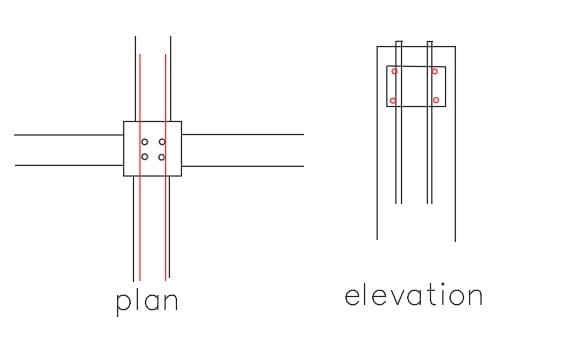wrxsti
Structural
- Sep 18, 2020
- 196
hi i have a pedestal which is surrounded by 4 No. tie beams each 12inches by 12inches
pedestal is 18x18
bolts are 4 number and offset 3 inches both way from centerline (form a 6x6 square about centerline of pedestal)
embedment about 20 inches
the top of the tie beam is about 6 inches down from top of pedestal
see rough sketch attached

can the tie beam be considered to help with concrete breakout in shear?
also can the tie beam reinforcement be considered as shear reinforcement to help the anchors?
the top steel in the tie beam would be around 9 inches down from the pedestal
i know commonly 3 layers can be used at 2-3-3 from the top of the pedestal
thanks
pedestal is 18x18
bolts are 4 number and offset 3 inches both way from centerline (form a 6x6 square about centerline of pedestal)
embedment about 20 inches
the top of the tie beam is about 6 inches down from top of pedestal
see rough sketch attached

can the tie beam be considered to help with concrete breakout in shear?
also can the tie beam reinforcement be considered as shear reinforcement to help the anchors?
the top steel in the tie beam would be around 9 inches down from the pedestal
i know commonly 3 layers can be used at 2-3-3 from the top of the pedestal
thanks





